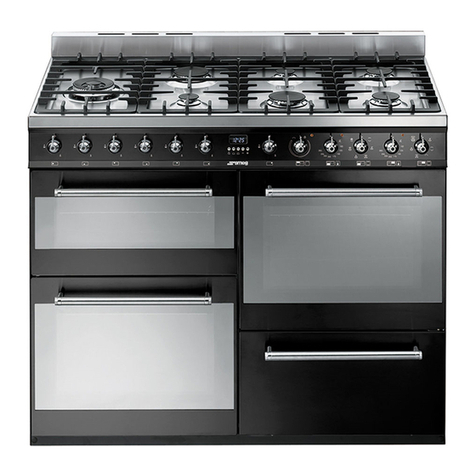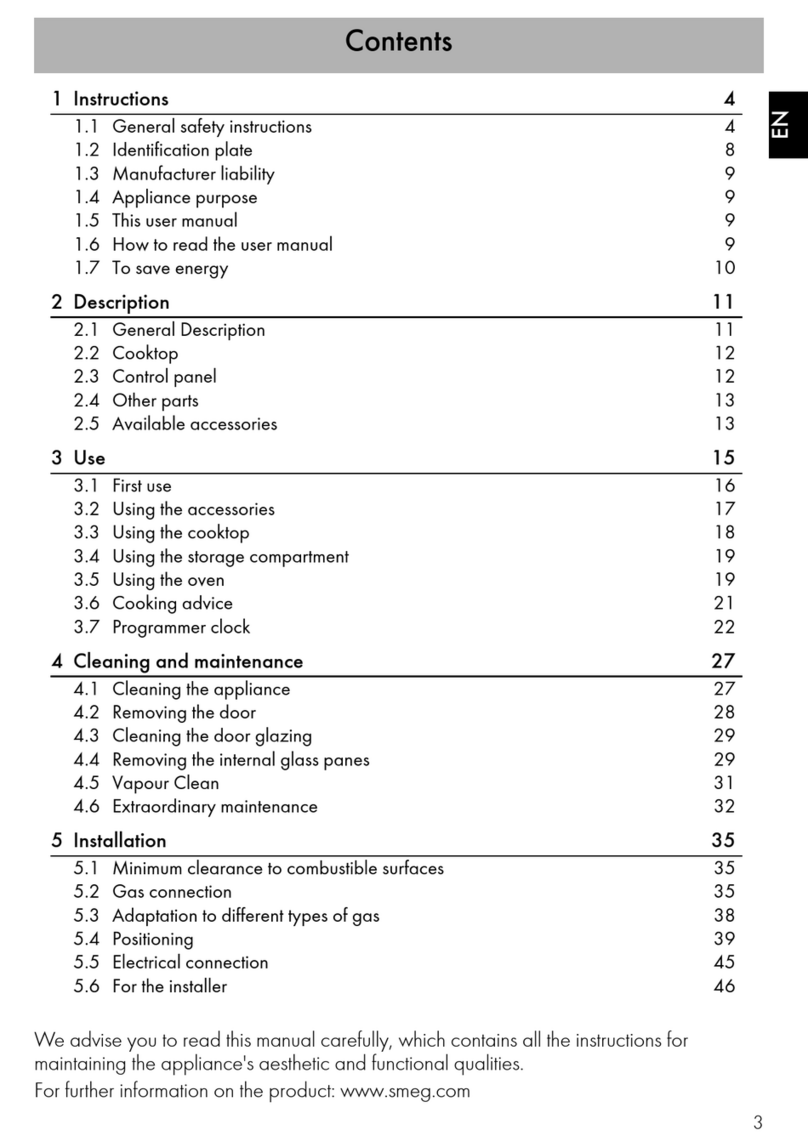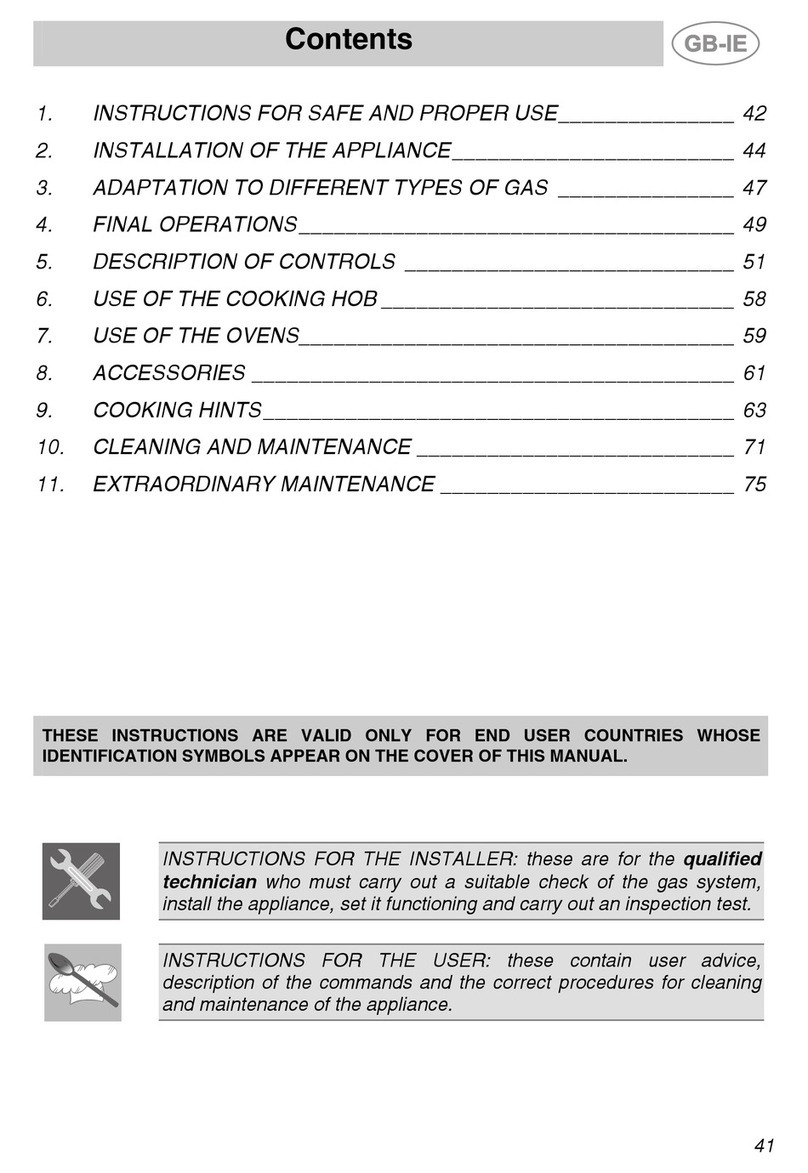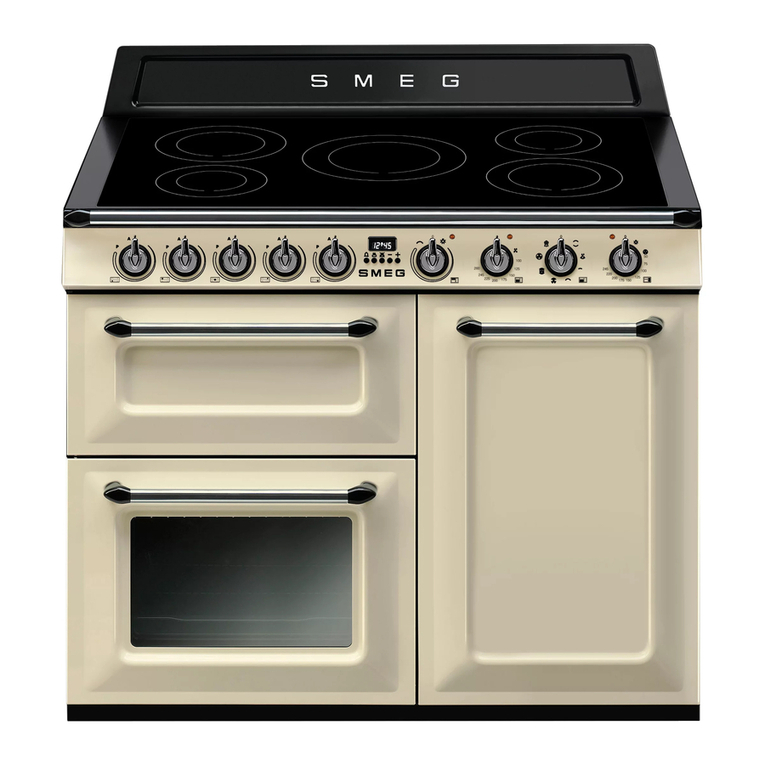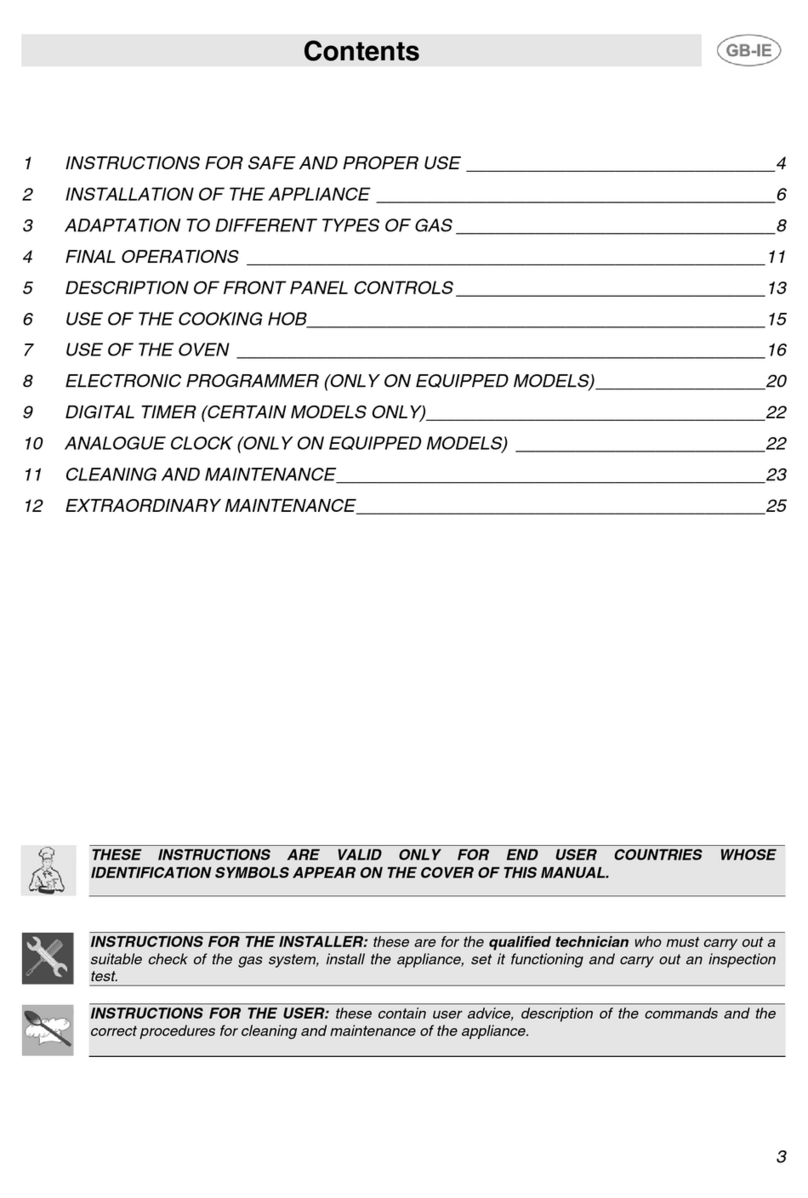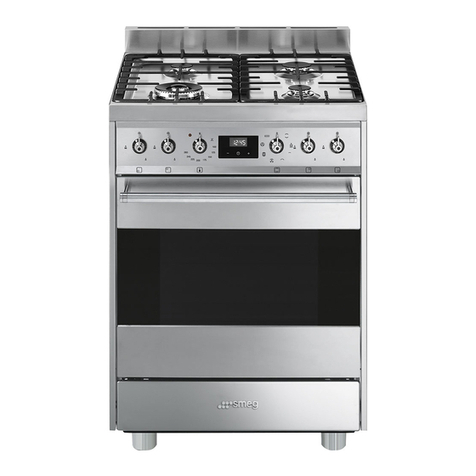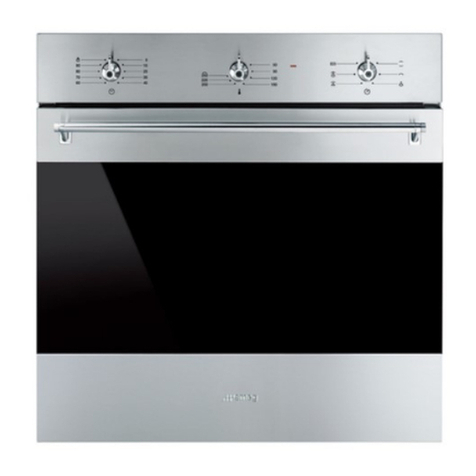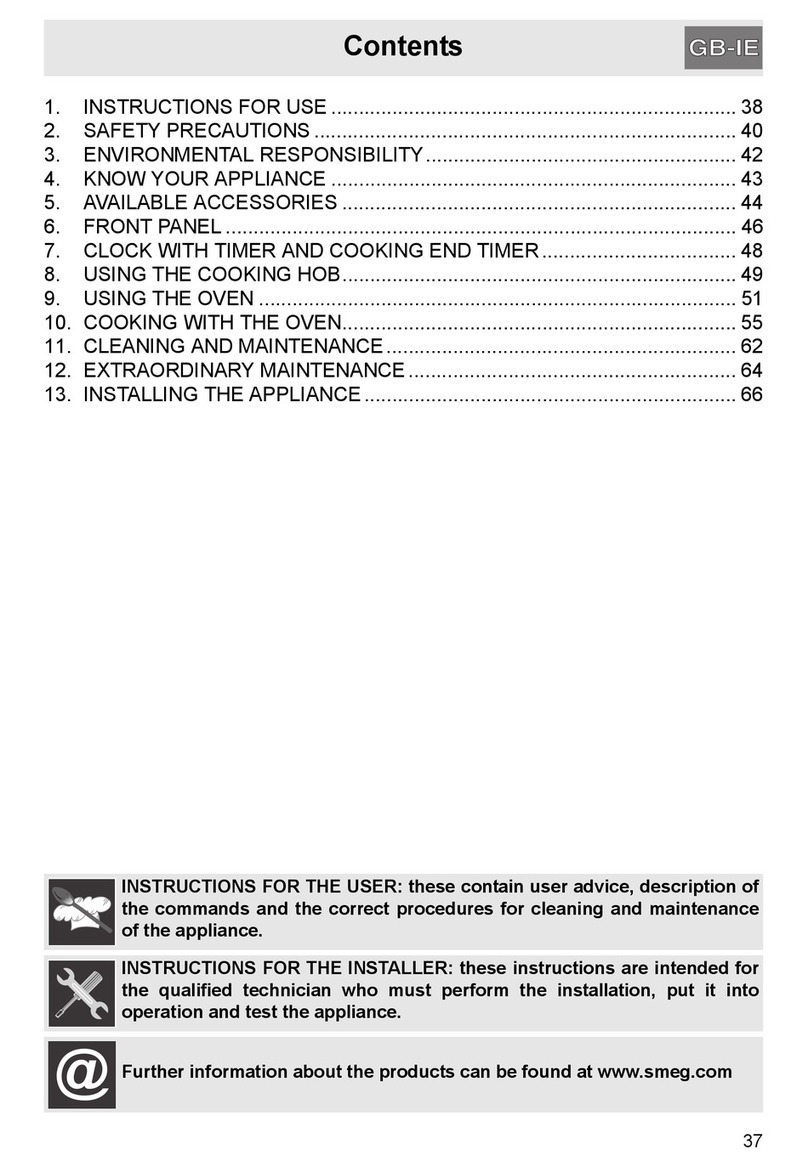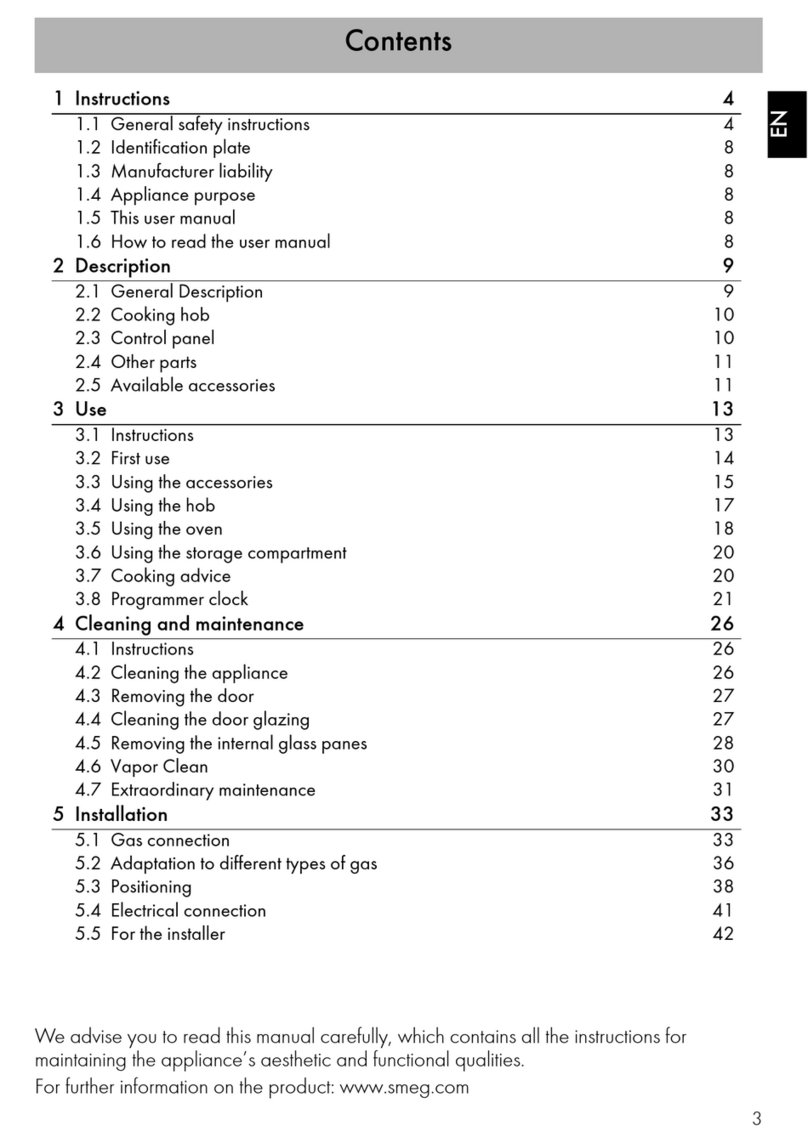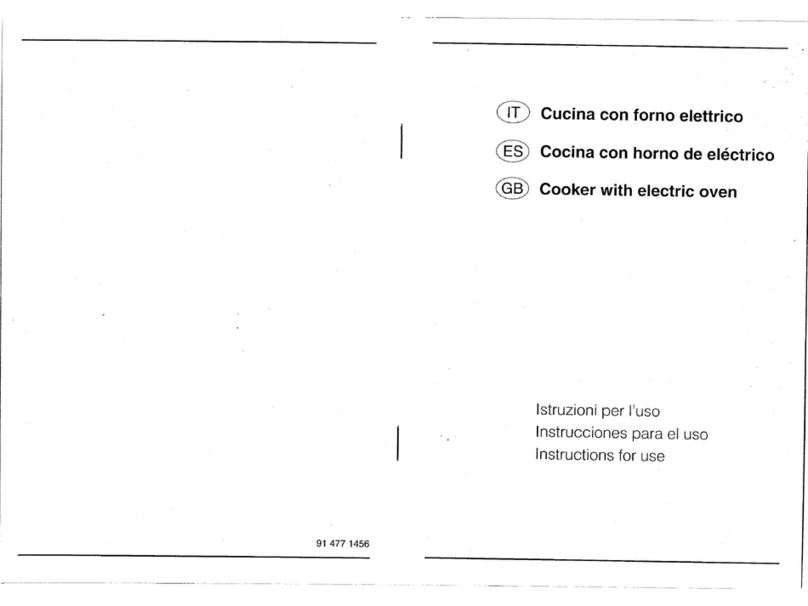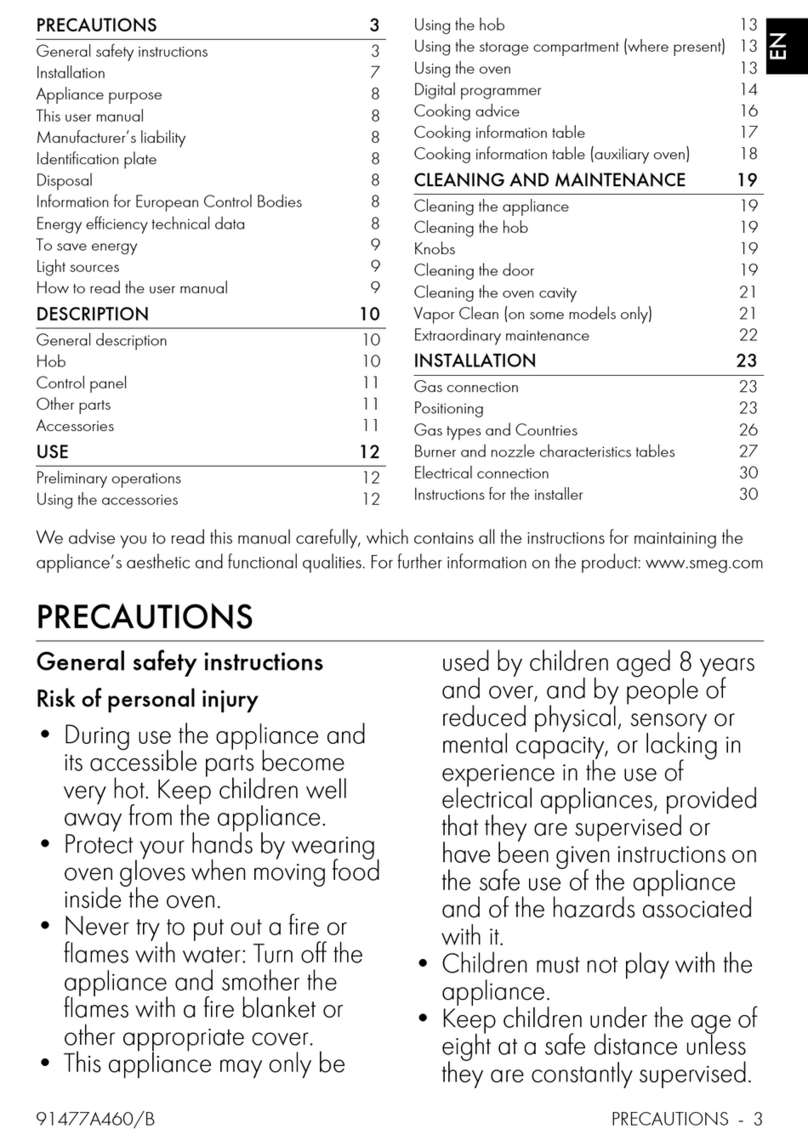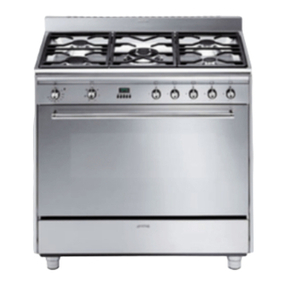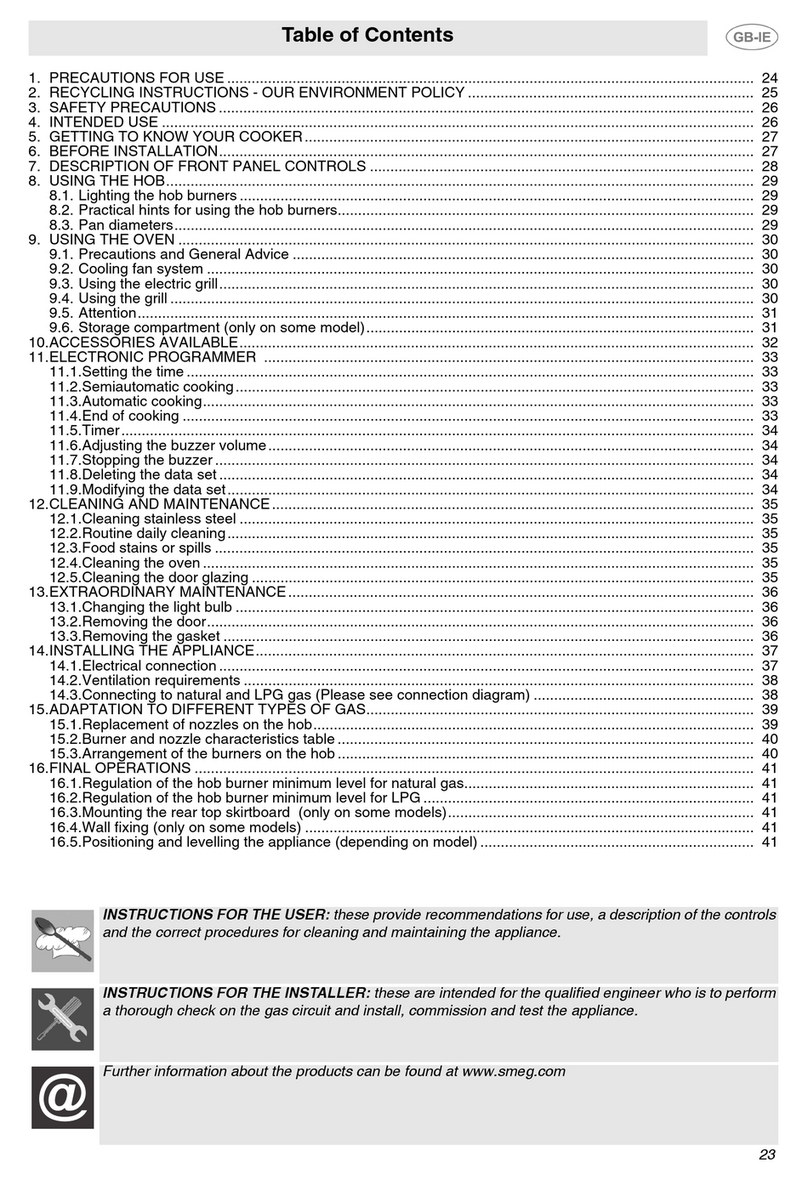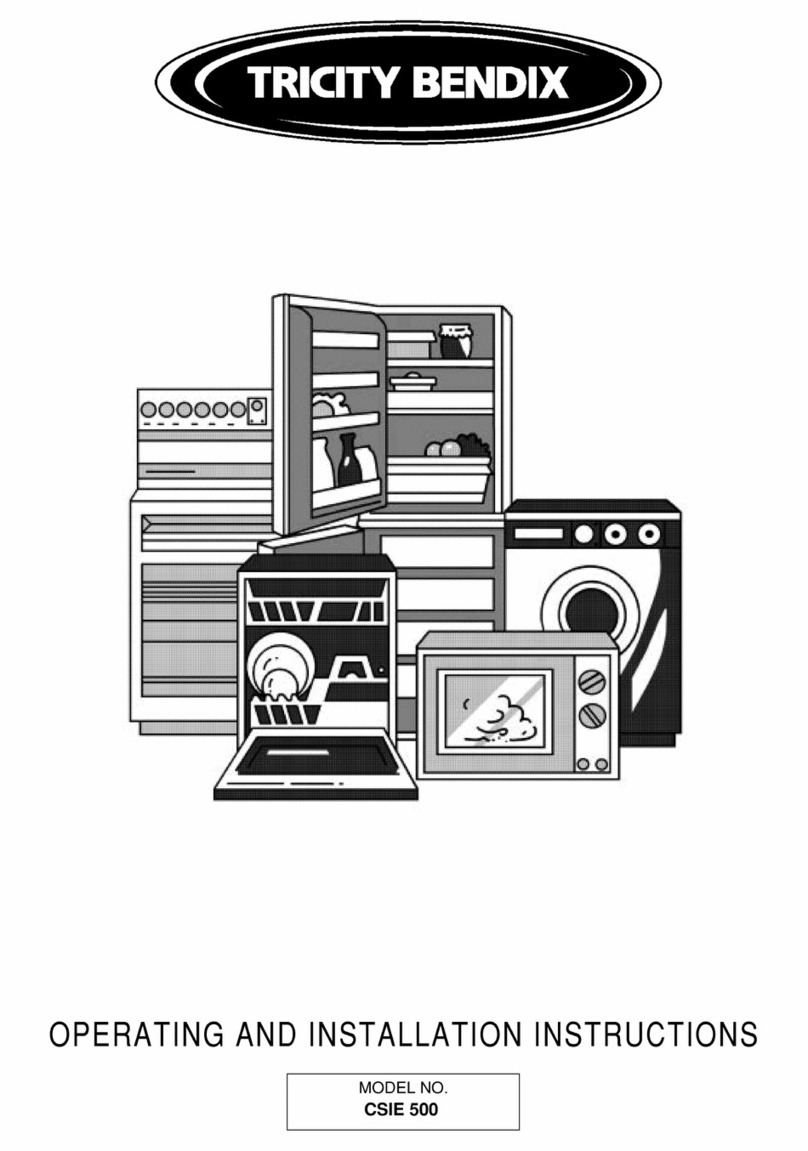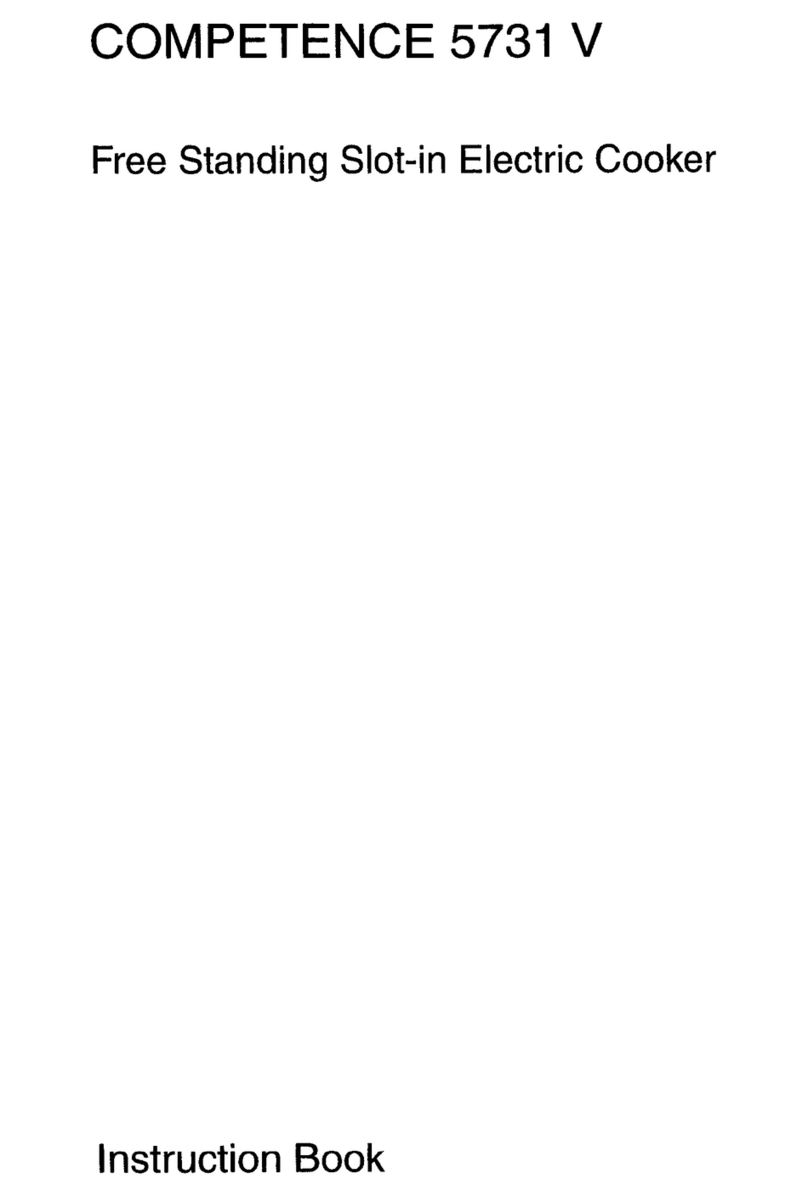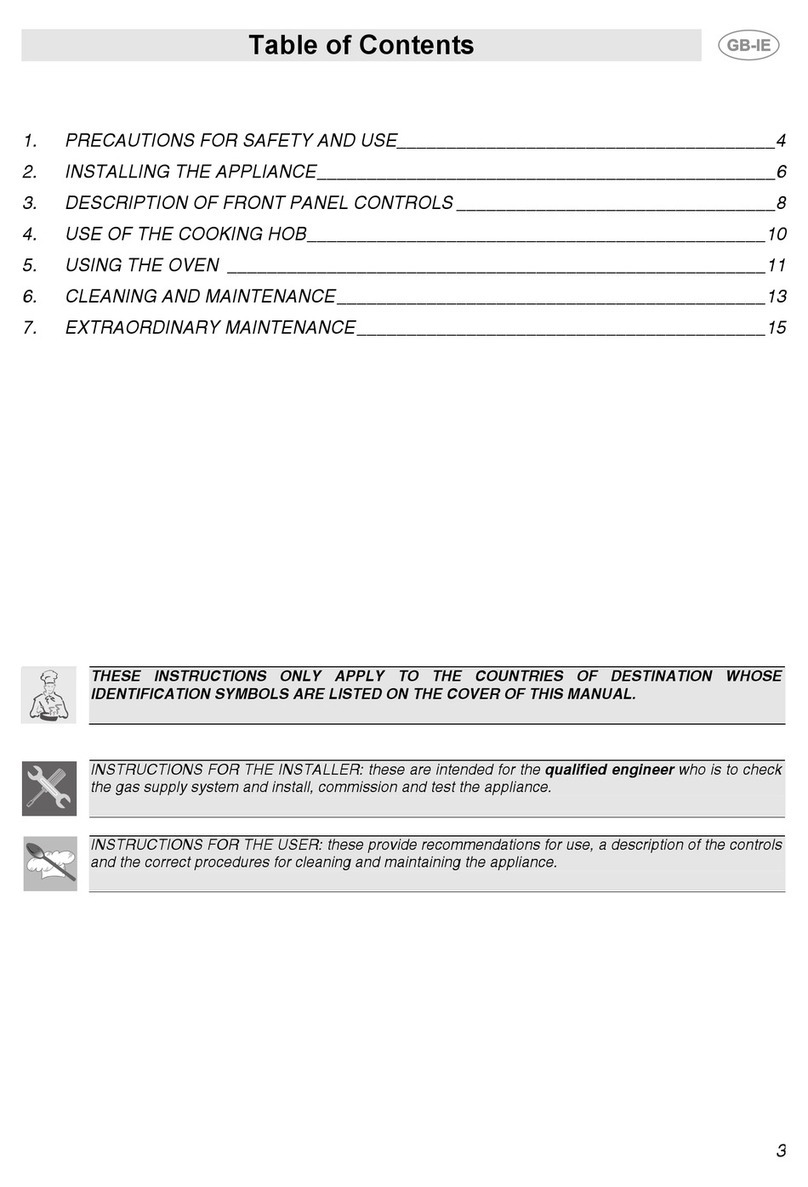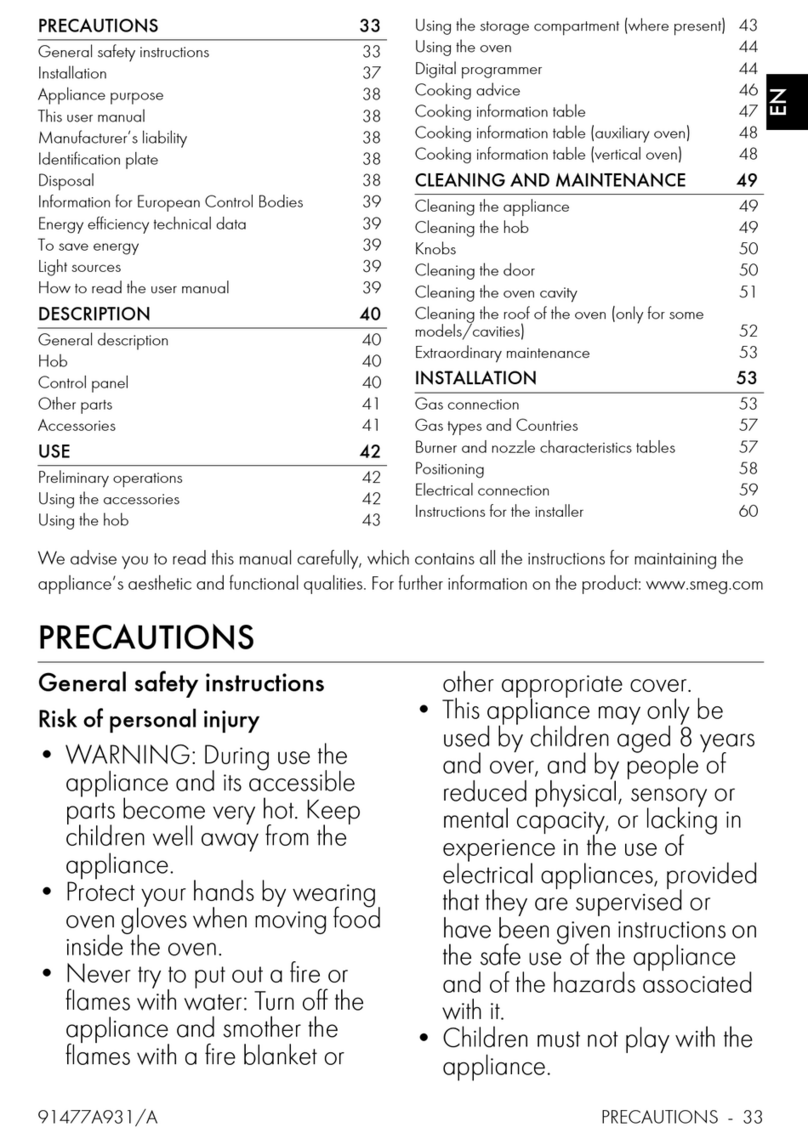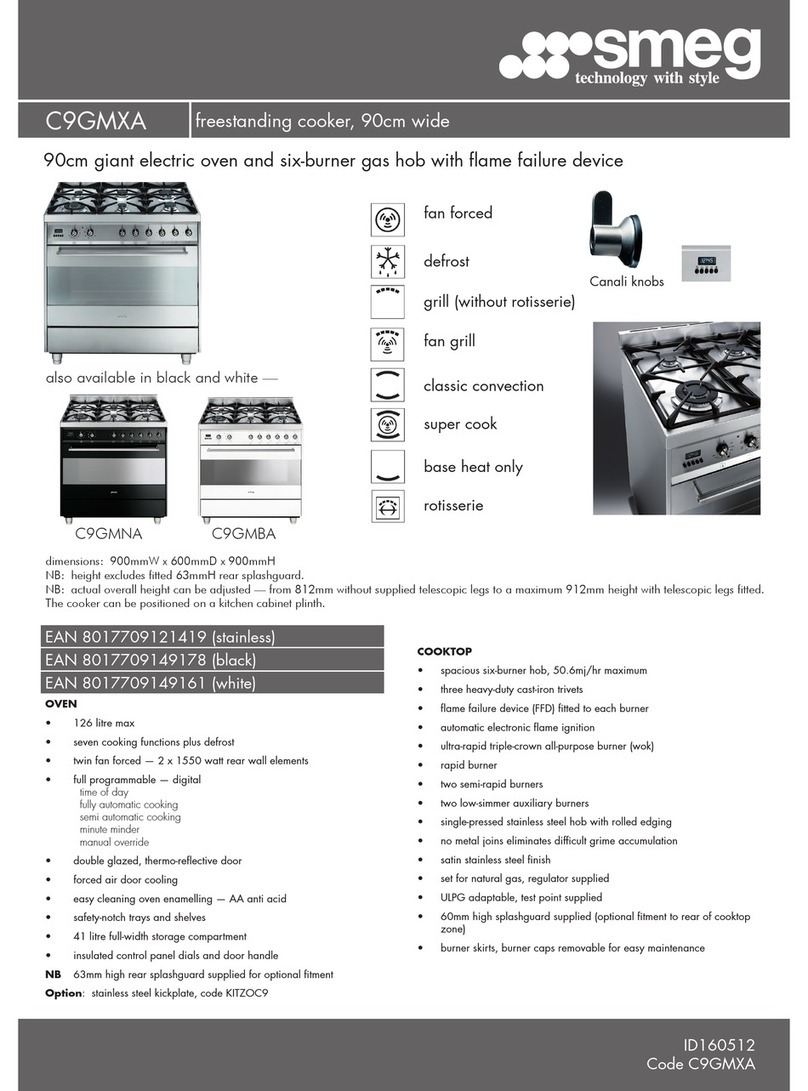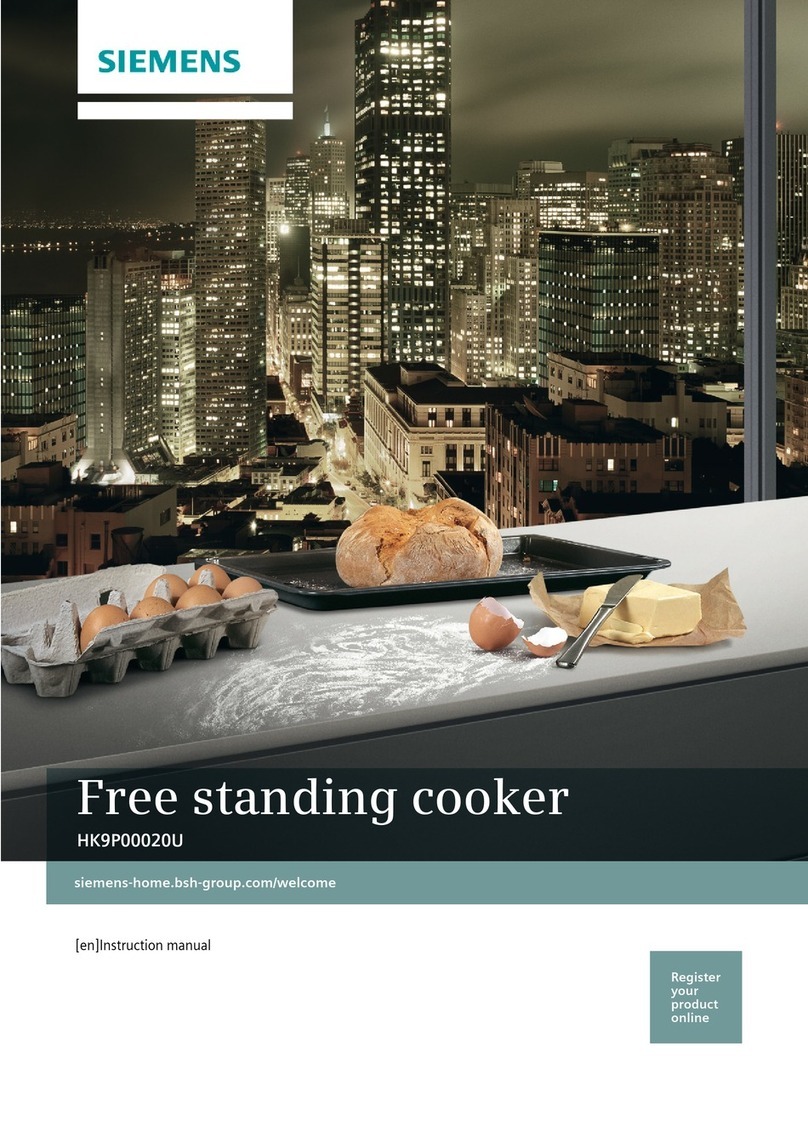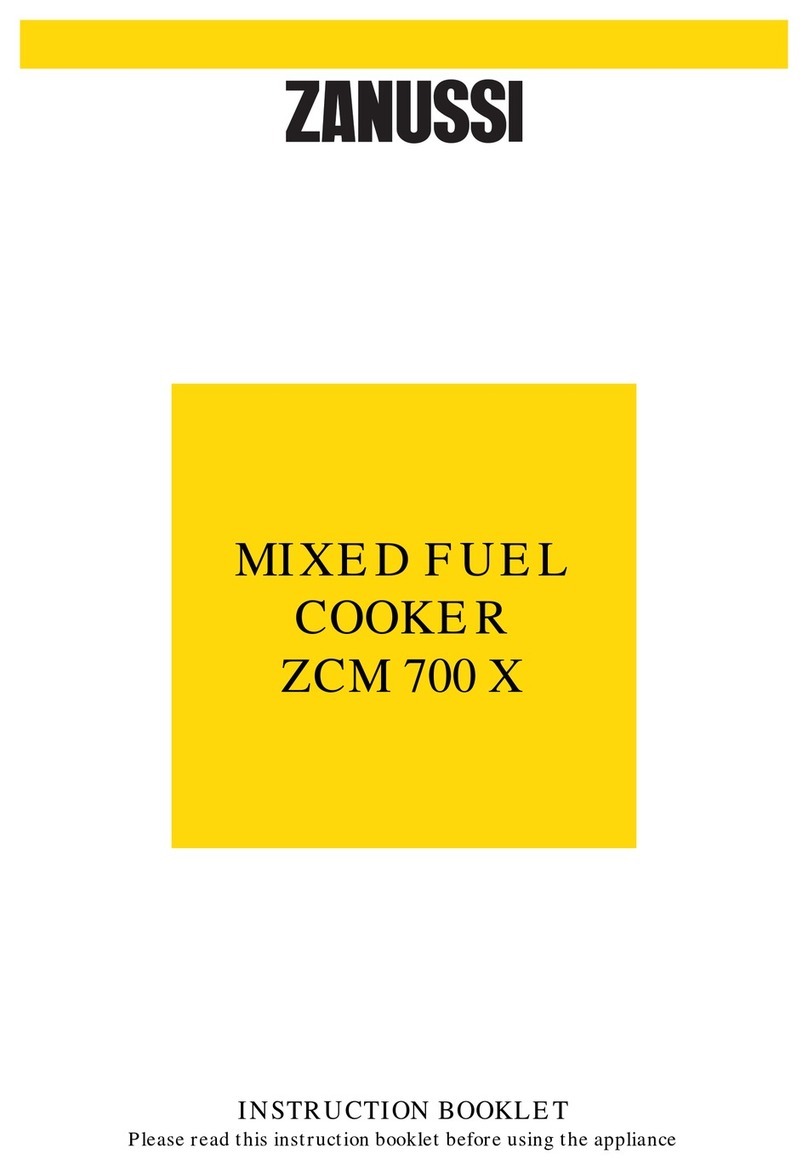
36 - PRECAUTIONS 91477A593/C
screws of the terminal supply
wires must be 1.5 - 2 Nm.
• This appliance can be used up
to a maximum altitude of 2,000
metres above sea level.
Appliance purpose
This appliance is intended for
cooking food in the home
environment. Every other use is
considered inappropriate. It
cannot be used:
• in employee kitchens, shops,
offices and other working
environments.
• in farms/farmhouses.
• by guests in hotels, motels and
residential environments.
• In bed and breakfast
accommodation.
This user manual
• This user manual is an integral part of the
appliance and must therefore be kept in its
entirety and within the user's reach for the
whole working life of the appliance.
• Read this user manual carefully before using
the appliance.
• The explanations in this manual include
images, which describe all that regularly
appears on the display. However, it should
be kept in mind that the appliance may be
equipped with an updated version of the
system, and as such, all that appears on the
display may differ from those in the manual.
Manufacturer’s liability
The manufacturer declines all liability for
damage to persons or property caused by:
• use of the appliance other than that
specified;
• failure to comply with the instructions in the
user manual;
• tampering with any part of the appliance;
• use of non-original spare parts.
Identification plate
The identification plate bears the technical data,
serial number and brand name of the
appliance. Do not remove the identification
plate for any reason.
Disposal
This appliance conforms to the WEEE
European directive (2012/19/EU) and
must be disposed of separately from
other waste at the end of its service life.
The appliance does not contain substances in
quantities sufficient to be considered hazardous
to health and the environment, in accordance
with current European directives.
To dispose of the appliance:
• Cut the power cable and remove it.
• Deliver the appliance to the appropriate
recycling centre for electrical and electronic
equipment waste, or return it to the retailer
when purchasing an equivalent product, on
a one for one basis.
Our appliances are packaged in non-polluting
and recyclable materials.
• Deliver the packing materials to the
appropriate recycling centre.
Information for European Control
Bodies
Fan forced mode
the ECO function used to define the energy
efficiency class complies with the specifications
of European standard EN 60350-1.
Energy efficiency technical data
Information in accordance with the European
energy labelling and ecodesign regulations is
contained in a separate document
Power voltage
Danger of electrocution
• Disconnect the mains power supply.
• Unplug the appliance.
Plastic packaging
Danger of suffocation
• Do not leave the packaging or any part of it
unattended.
• Do not let children play with the plastic
bags.
